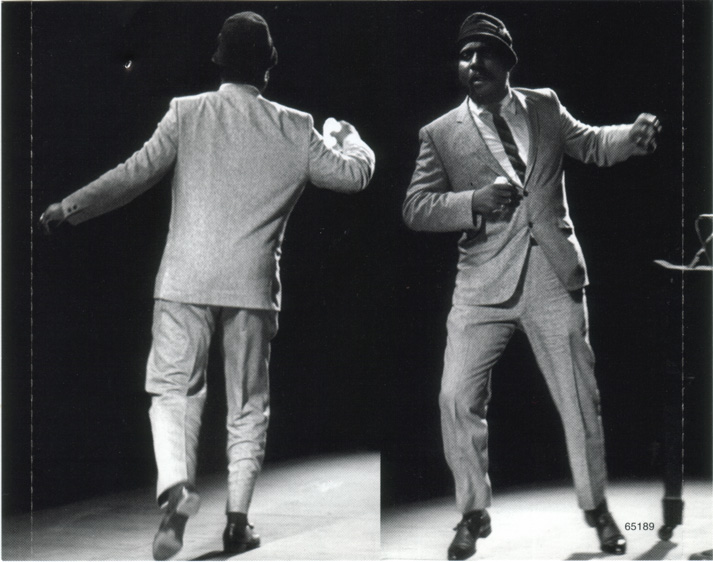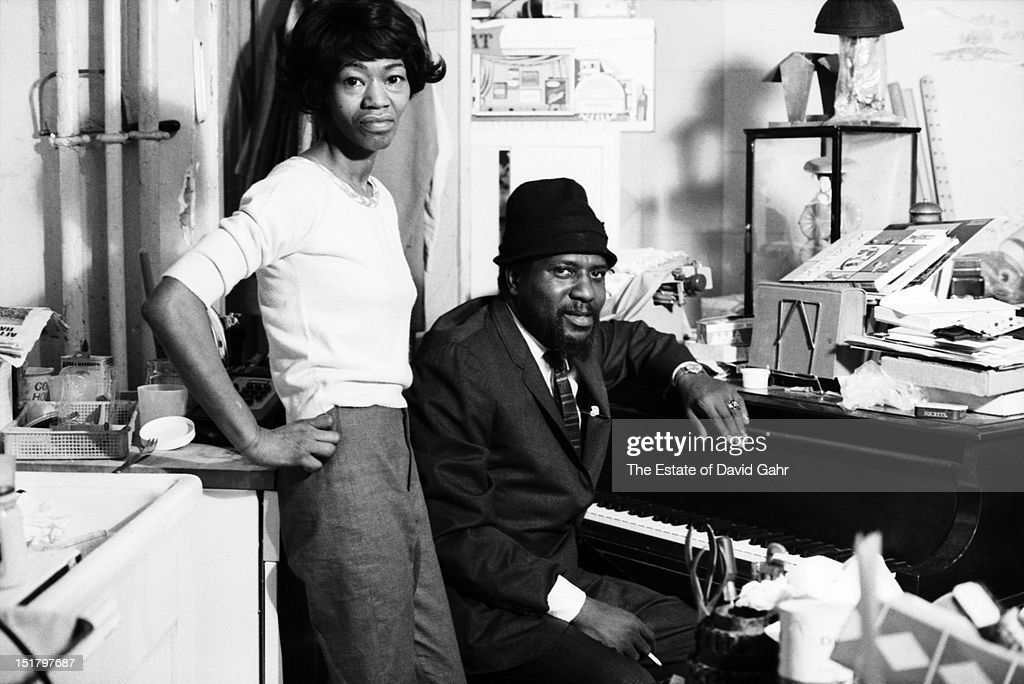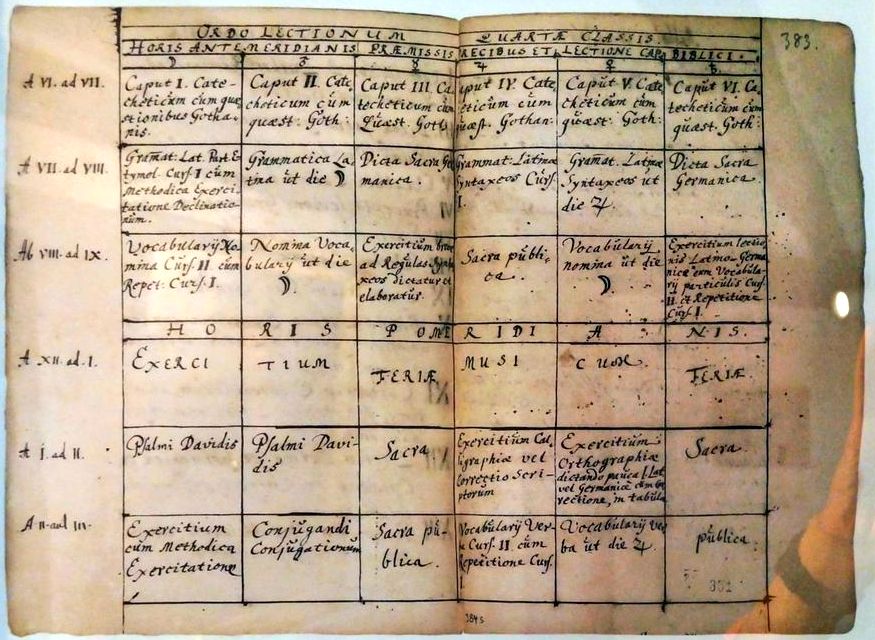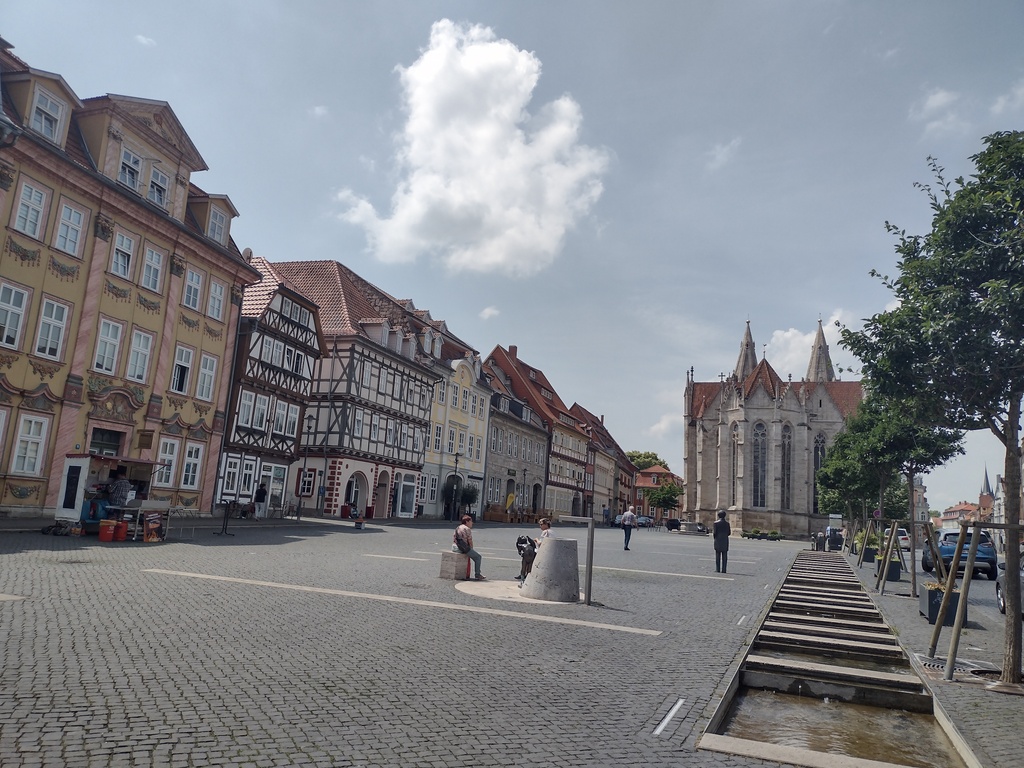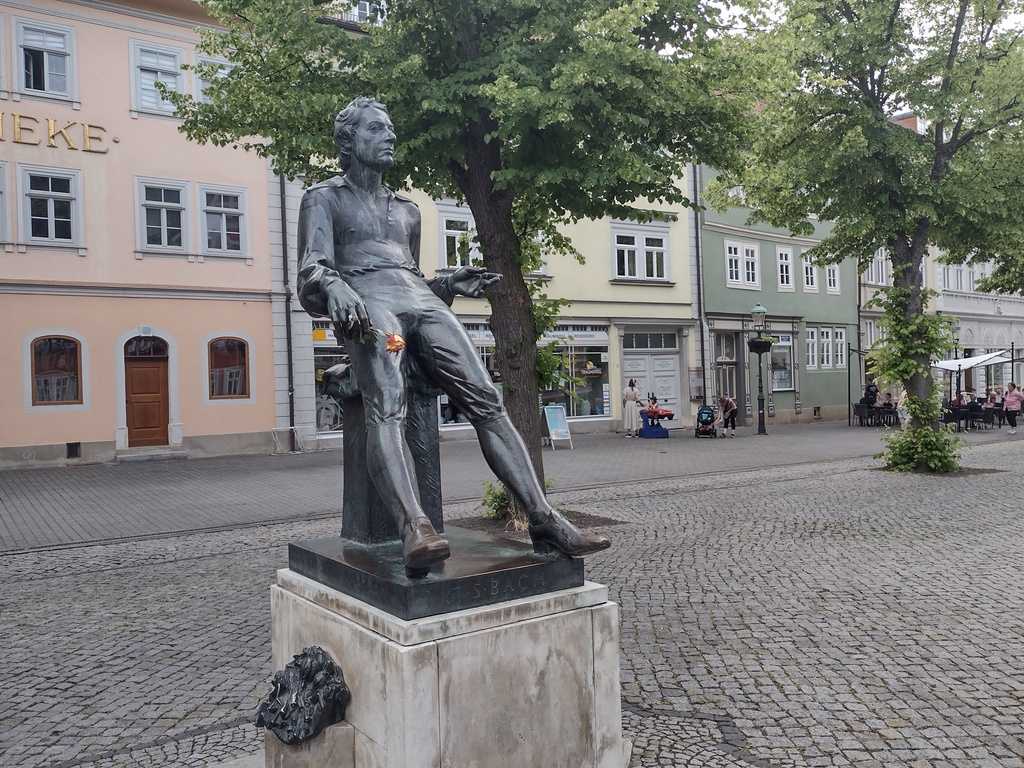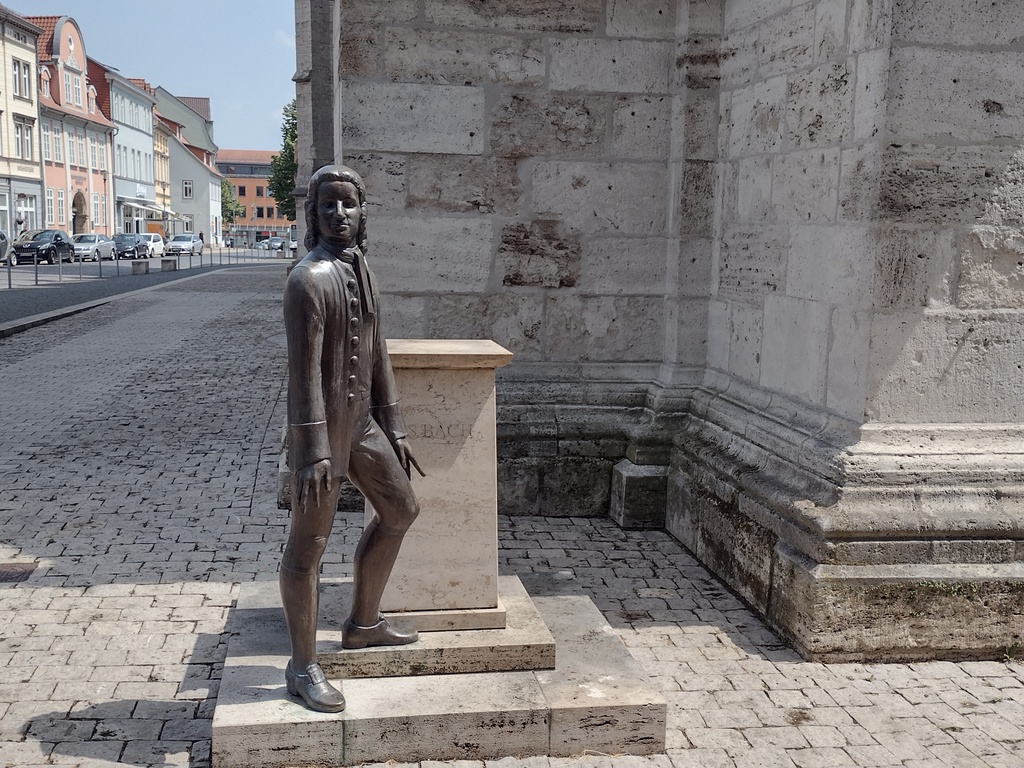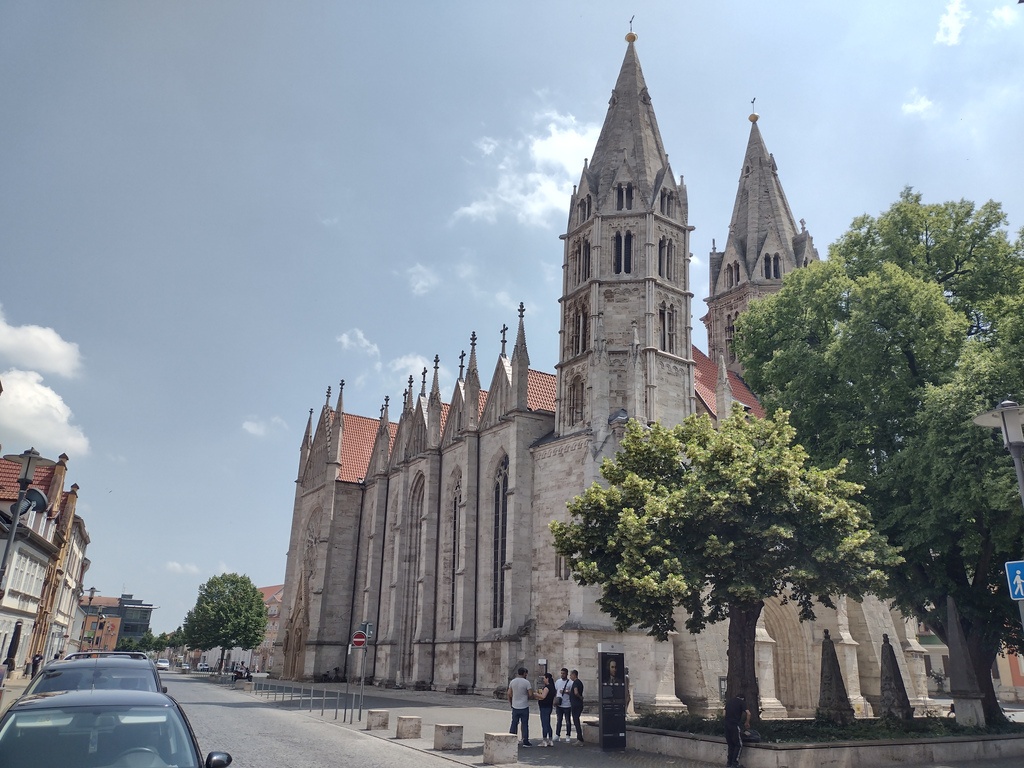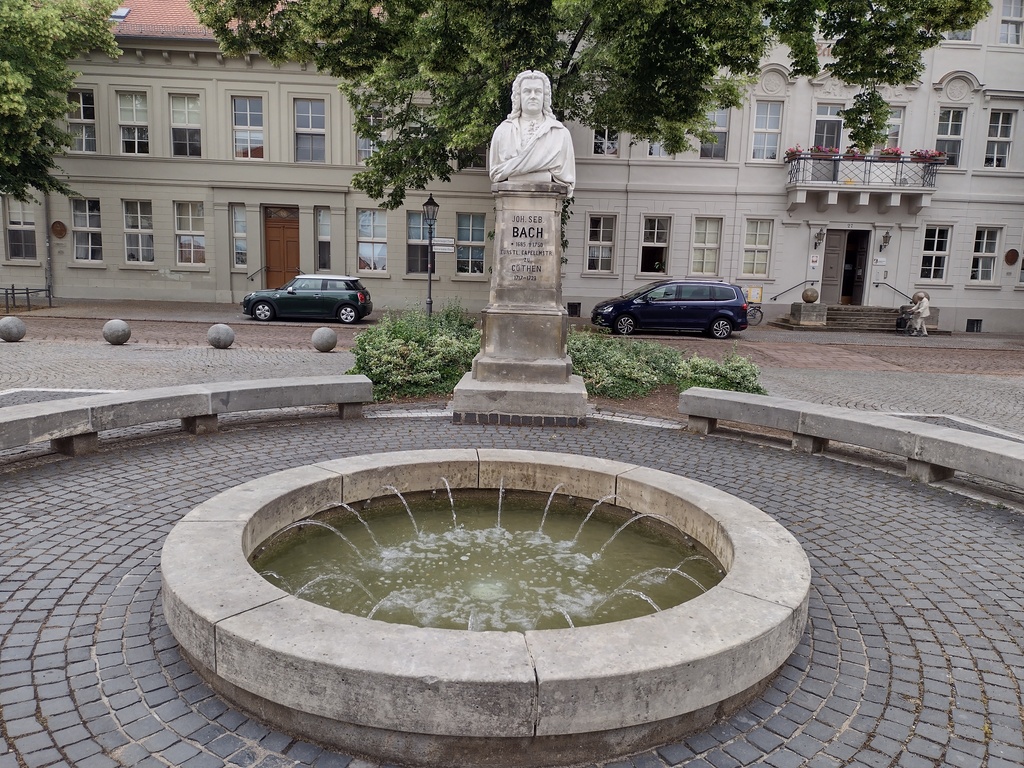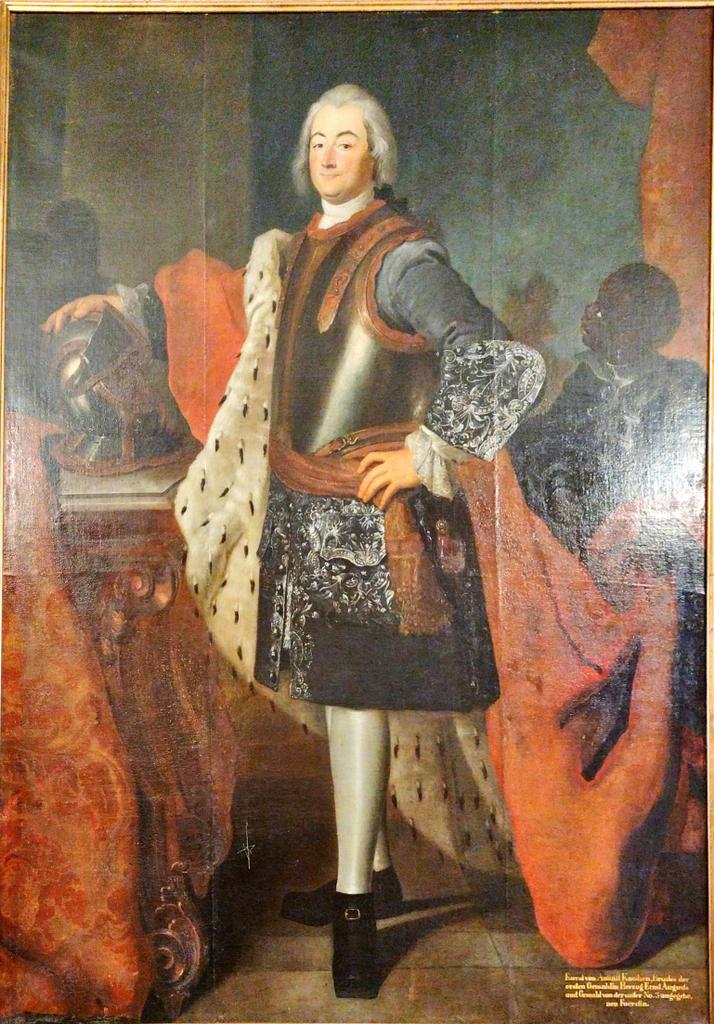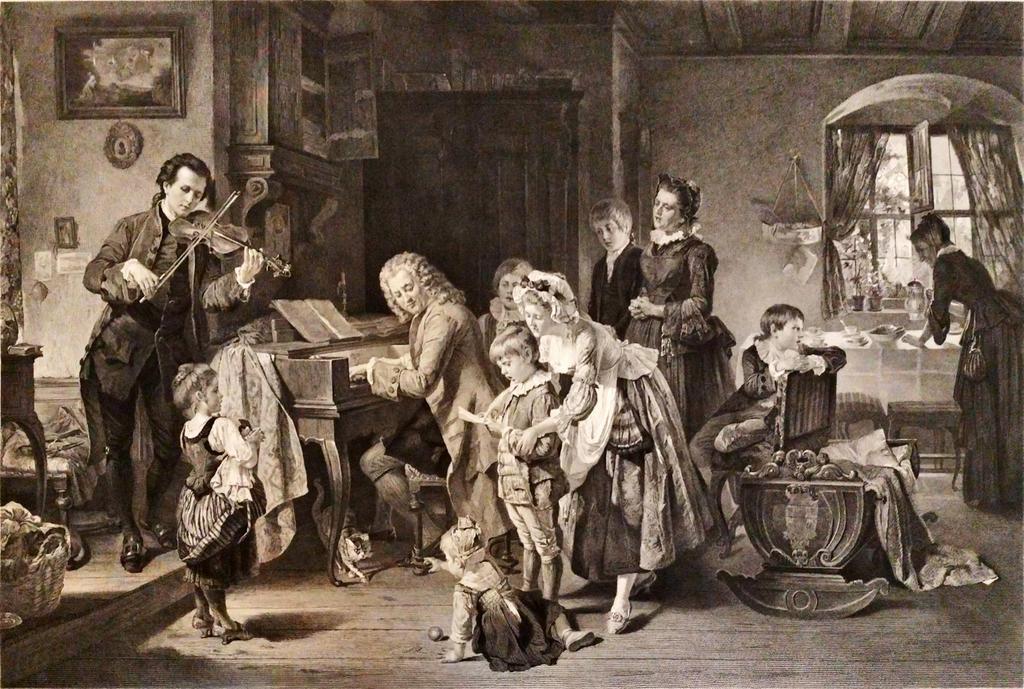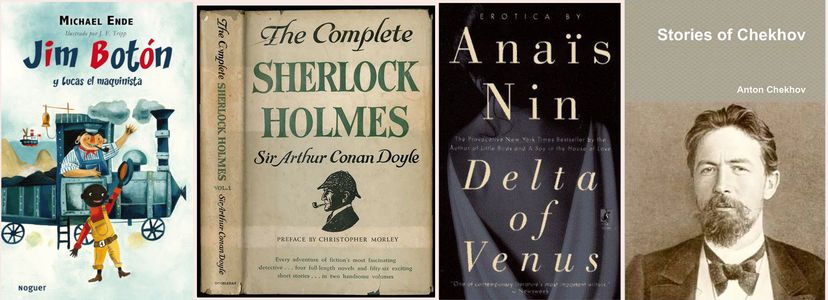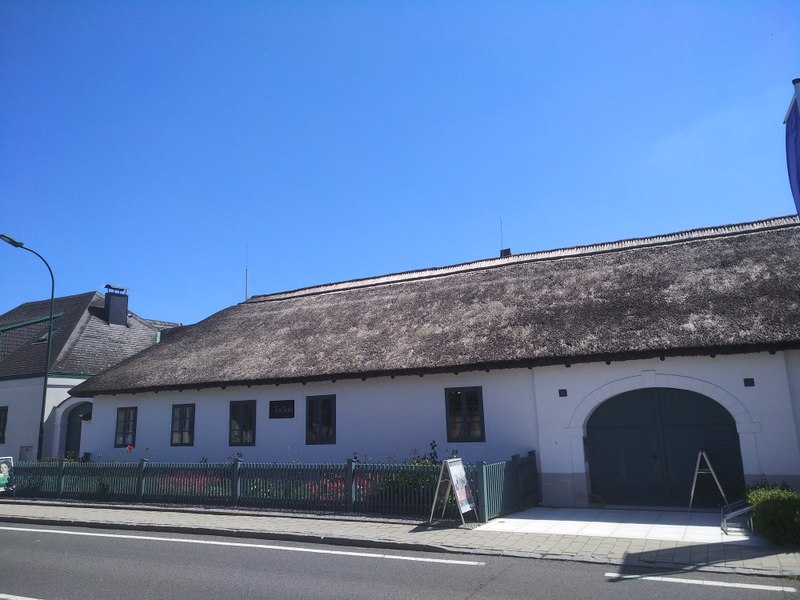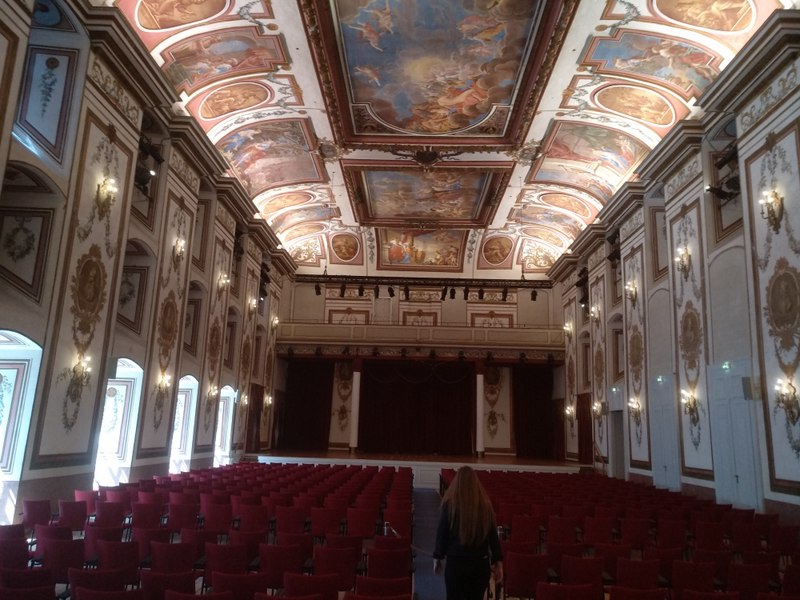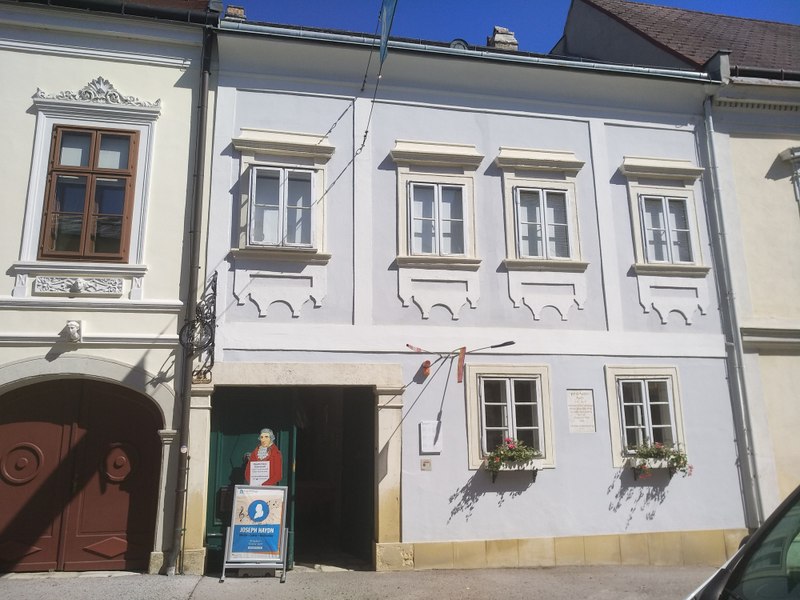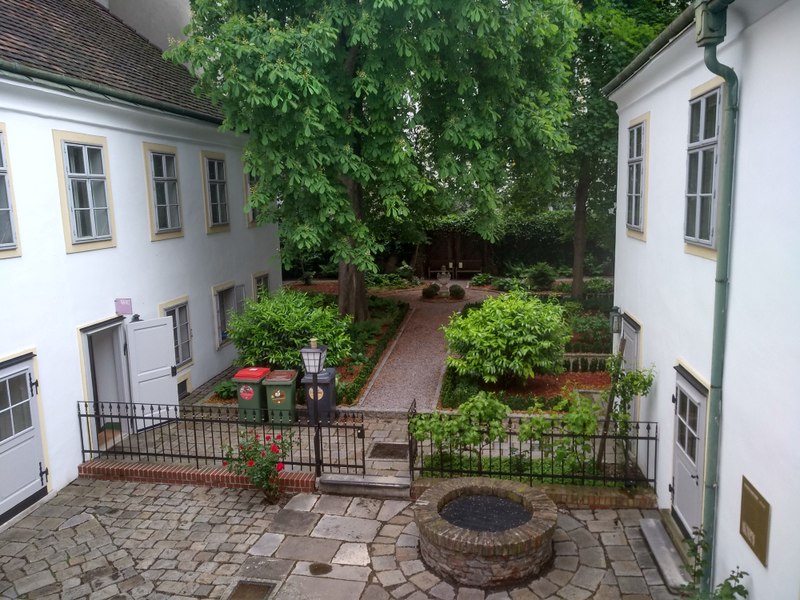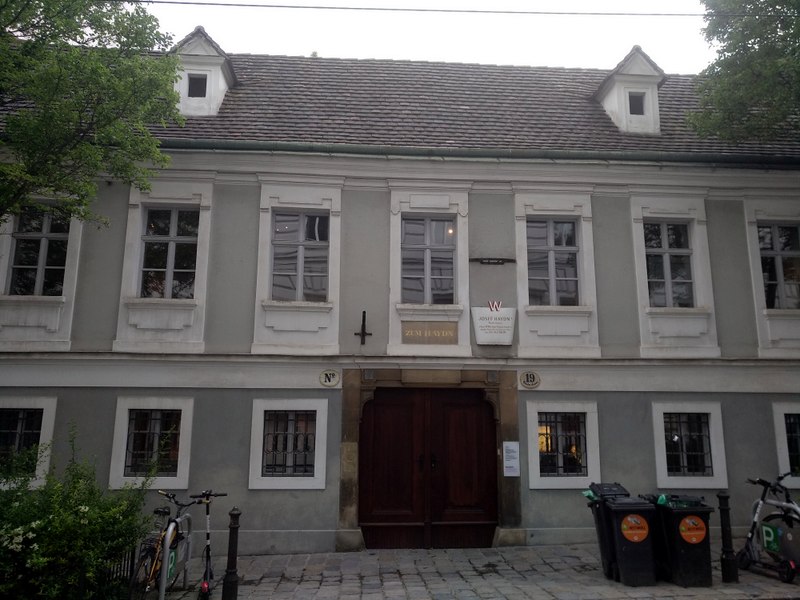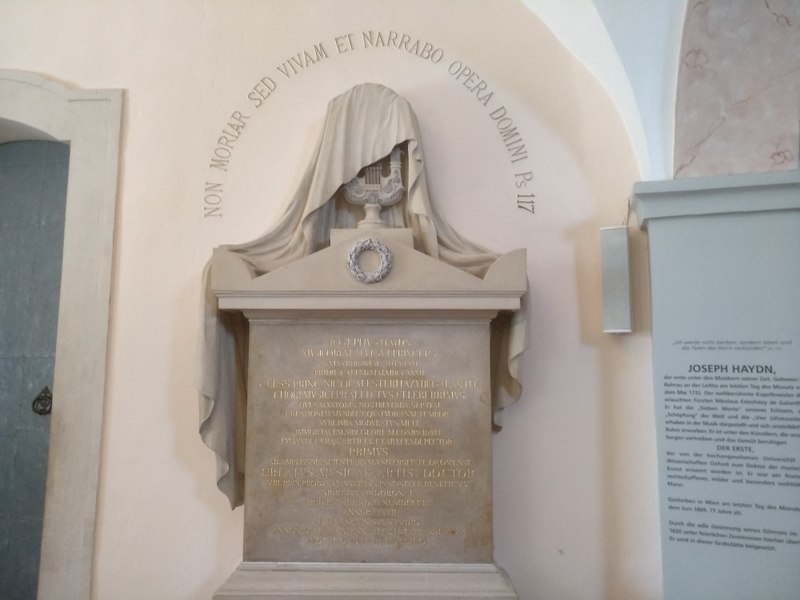Música Compositors
Romanticisme 1898-1908 Expressionisme 1909-1920 Serialisme 1921-1933 USA 1934-1951
Joventut i obres de romanticisme tardà 1898-1908
Neix el 1874 en una família jueva Ashkenazy a la Obere Donaustraße 5 del districte de Leopoldstadt a Viena. El pare, d’origen hongarès, tenia una botiga de sabates, la mare, procedent de Praga, professora de piano. Quan va morir el pare va haver de deixar els estudis i treballar d’administratiu a un banc, dedicant-se a la música i la filosofia els vespres.
Va ser pràcticament autodidacta, rebent només classes de contrapunt d’Alexander Zemlinsky que dirigia una orquestra d’aficionats.
1897: Quartet en D, que serà acceptat per ser interpretat. Zemlinksy en mostrarà un esborrany a Barhms, a qui S admirava.
El 1898 es converteix al luteranisme. Sobreviu dirigint corals i orquestrant operetes [i si aquest ofici li va servir per aprendre?] però ja comença a abandonar l’harmonia i el 1908 deixarà la tonalitat. Quan s’interpreten en públic les seves primeres obres el públic reacciona malament.
1898: Zwei gesänge Op.1
1899: 4 Lieder, op. 2 , 6 Lieder, op. 3, Verklärte Nacht op.4., inicialment rebutjada.
El 1901 es casa amb Mathilde, la germana de Zemlinsky, amb qui tindrà dos fills. Aniran a viure a Berlin on viuen com poden ajudats per Richard Strauss. El 1903 tornen a Viena. Es guanyarà la vida donant classe d’harmonia i contrapunt, el 1904 Anton Webern i Alban Berg seran deixebles seus.
1902: Pelleas und Melisande, op. 5. A partir dde l’obra de teatre simbolista de Maurice Maeterlinck (1893), que va ser apreciada per Strindberg i Rilke i que també va inspirar Debussy, Fauré, Jean Sibelius i and Mel Bonis. Mélisande [reina?] ha escapat d’una matrimoni infeliç i ha perdut la corona en un rierol. Golaud, net del rei Arkël, la troba i es casen. Però al cap d’un temps Mélisande s’enamora del germà de Golaud, Pélleas. Sospitant, els fa espirar pel seu fill i els descobreix besant-se. Mata Pélleas i fereix Mélisande, que morirà al cap de poc després de donar llum a una nena molt petita. No s’indica l’època, tret corrent dels drames simbolistes.
1903: 8 Lieder per a soprano, op. 6.
1903: Gurrelieder (orquestrat el 1910). Basat en un cicle de poemes de l’escriptor danès Jacobsen sobre una llegenda medieval que canta l’amor del rei Waldemar amb la seva amant Tove. La reina Hedwig la farà matar, per gelosia. Waldemar blasfema maleint Déu per haver permès aquesta tragèdia. Torment espiritual i mort. Al final Waldewar s’aixecaran de les tombes, en una meva de renovació còsmica.
1904: Quartet de corda no. 1, re menor, op. 7, 6 Lieder amb orquestra, op. 8 . [recorda Mahler]
1906: Simfonia de cambra núm. 1, op. 9. [op.10 1908, op.11 1909] 2 Balladen, op. 12.
1907: Friede auf Erden, op. 13.
Richard Strauss i Mahler reconeixen el seu talent. El darrer li donarà suport. S d’entrada no era entusiasta de Mahler, però després de la tercera simfonia el venerarà.
Expressionisme 1908-1920
Amb les classes amb prou feines sobreviu. Mahler l’ajudarà a pagar el lloguer i li seguirà donant suport públicament, quan s’executen les seves primeres obres plenes de dissonàncies, tot i confessar que no l’acaba d’entendre .
Coneix els pintors Oskar Kokoschka i Gerstl. Es posa a pintar seriosament. La seva dona té una aventura amb Gerstl i fuig amb ell però al cap d’uns mesos torna. Gerstl es suicida. Fa una exposició de pintura. Coneix Kandinsky amb qui mantindrà una amistat tota la vida.
(G) Primera crisi. En pintura li mancava tècnica, però sentia que seguia la seva consciència (tal com pretenien els expressionistes), de manera més espontània que amb la música.
1908: 2 Lieder , op. 14. 15 Gedichte aus Das Buch der hängenden Gärten de Stefan George, op. 15. Quartet de Corda no. 2, en Fa sostingut menor (amb Soprano), op. 10.
(G) A les 15 cançons de Das Buch der hängenden Gärten, per primer cop hi ha dissonància que no serveixen per resoldre a un altre acord. I així desapareix l’harmonia tonal. Ni el músic, ni el poeta busquen simpatia, o evocar un èxtasi.
Quartet no.2. “This quartet consists of four thematically related movements which successively reflect the transformation of his style, but do not further it… The incorporation in the trio of the scherzo of the popular melody O du lieber Augustin, the words of which end with the tag ‘Alles ist hin’, would fit this interpretation [la crisi de la fuga de la seva dona], as would the George poems set for soprano voice in the two later movements, the first a prayer for divine solace after earthly struggles, the second a vision of the spirit’s journey to ethereal realms. Although Schoenberg’s choice of subject for his next vocal works was to be directed towards human insights, he evidently recognized already that his ultimate aim was religious.”
1909: 3 Stücke per a Piano, op. 11. Fünf Orchesterstücke, op. 16. Erwartung per a Soprano i orquestra, op. 17.
“These made possible swifter transformations and more abrupt contrasts than music had hitherto known. Moreover dissonance’s new independence permitted, at least in an orchestral context, unprecedented simultaneous contrasts. It is not only novelty of expression in itself but the power to bring seemingly irreconcilable elements into relation that gives the music its visionary quality, far beyond that of the painted ‘visions’.
For a time Schoenberg believed that by following the dictates of expression he would be able to renounce motivic features as well as tonality. The last two pieces in opp.11 and 16 to be written, the final piece in each set, show the direction of his thinking. The orchestral piece centres on a continuously evolving melodic line with no clear expository stage; the piano piece relies for coherence as much on dynamics and texture as on pattern. From this point two possibilities suggested themselves. One was to devise ideas that were complete in themselves and required no development. This held no lasting attraction for a composer of Schoenberg’s imaginative fecundity. He composed two tiny pieces for chamber ensemble and part of a third early in 1910, and the next year six equally minute piano pieces which he published as op.19; thereafter he left this line of thought to Webern. For Schoenberg the way forward lay in the construction of large forms on the basis of a text. This allowed him scope to build on the experience of opp.11 and 16. Immediately after the instrumental pieces he composed in the astonishingly short time of 17 days the half-hour monodrama Erwartung.”
(Erwartung i Glückliche Hand estan influides per l’obra d’Otto Weininger Geschlecht und Charakter, que identifica el tret femení com a passiu, mares o prostitutes, i el masculí com a inclinat al geni. L’obra va tenir un impacte en Wittgenstein.)
Erwartung: “The single character in this piece is an unnamed woman. Full of fear and apprehension, she is wandering through a forest at night in search of her lover. The only dramatic event, her discovery of his murdered body, occurs at a fairly early stage; the rest of her monologue passes from recollection of their love, through jealousy to a sense of reconciliation born of exhaustion. As the composer remarked, the whole drama may be understood as a nightmare, but the point is immaterial because the reality explored is purely psychological. There is no realistic time scale: past and present co-exist and merge in the woman’s mind as terror, desire, jealousy and tenderness cut across one another in confused association. Traditional tonal order could scarcely have met the demands of such a subject: Schoenberg’s extraordinary score depends to a considerable extent upon a rationality beyond conscious control. True, various unifying factors are observable, such as fixed pitch elements that turn upon a vestigial D minor (his favourite key throughout his life, whether in tonal, freely pantonal or serial composition) and a number of motivic figures that recur time and again, especially at the beginning of phrases. But since these are short, widely scattered and quickly submerged in the stream of continuous development their contribution to coherence at surface level is small; the music can scarcely be called athematic, but it goes further in that direction than any other work of Schoenberg. The monologue falls into several lengthy paragraphs which provide the clearest structural feature, but even here divisions are blurred and larger changes of mood disrupted by innumerable contradictory emotions. Beyond a certain point nothing can impinge upon the dreamlike continuum of musical images.”
The musicologist Charles Rosen has said that Erwartung, along with Berg’s Wozzeck and Stravinsky’s The Rite of Spring, is among the “impregnable” “great monuments of modernism.
El 1910 es dedica a escriure el tractat Harmonielehre i a orquestrar els Gurre-Lieder. Fracassa a l’hora d’obtenir una plaça a l’Akademie für Musik i el 1911 se’n va a Berlin. Amb dificultats al començament, comença a ser conegut.
1910: Die glückliche Hand per a cor i orquestra, op. 18.
“The main action symbolizes this situation. The man loves a woman who deserts him for a rival, but seems to return to him. In the mistaken belief that he has won her he finds strength to withstand his enemies and inspiration for artistic creation. His resulting work is symbolized by a trinket; it excites envy, but he recognizes it as meretricious. The woman plays him false and the cycle is complete. Although the style of the music is close to that of Erwartung, Schoenberg reintroduces features that he had temporarily set aside, to meet the more varied action and the wider implications of the text. Clear formal divisions reassert themselves: recapitulatory reminiscence plays an important part in the later stages of the action and there are correspondences between the flanking choral scenes, where exact imitation reappears. There is also a new element, barely hinted at in the works of 1909: the use of parody to characterize such situations as the metal working and the woman’s fickleness.”
1911: Sechs Kleine Klavierstücke, op. 19. Herzgewächse per a Soprano, op. 20.
1912: Pierrot lunaire, op. 21
Basat en poemes d’Albert Giraud. (WK)Pierrot lunaire consists of three groups of seven poems. In the first group, Pierrot sings of love, sex and religion; in the second, of violence, crime, and blasphemy; and in the third of his return home to Bergamo, with his past haunting him. Schoenberg, who was fascinated by numerology, also makes great use of seven-note motifs throughout the work, while the ensemble (with conductor) comprises seven people. The piece is his opus 21, contains 21 poems, and was begun on March 12, 1912. Other key numbers in the work are 3 and 13: each poem consists of 13 lines (two four-line verses followed by a five-line verse), while the first line of each poem occurs three times (being repeated as lines 7 and 13).
(G) Parody assumes a very important role in Pierrot lunaire. This work, composed in 1912, before the framing choral scenes of Die glückliche Hand, consists of 21 poems set for speaker and chamber ensemble. Schoenberg had employed melodrama before in the summer wind narrative of the Gurre-Lieder. His highly stylized use of the speaking voice, for which he notated relative pitches as well as exact rhythms, proved an ideal vehicle for the Pierrot settings, which were conceived in what he described as a light, ironic–satirical tone. The rather modish verses, by turns grotesque, macabre or consciously sentimental, provide the occasion for presenting, with the detachment that the protagonist in Die glückliche Hand failed to achieve, human activity as a shadow play in which menace and absurdity are on a level. The focus shifts at random, as in a dream, between the lunatic activities of the clown, impersonal scenes, the poet in the first person and the self-absorbed artist, who is not spared. Within his new style Schoenberg parodies the characteristics of a great range of genre pieces, very often retaining the ghost of their formal layout as well. In music the lines dividing ironic from direct reference are often hard to detect. The peculiar fascination of Pierrot lunaire lies in this ambiguity. The nightmare imagery of some of the poems might scarcely be admissible without ironic distancing, yet the music often strikes with authentic horror. Mockery constantly shades into good humour, exaggerated pathos into the genuinely touching. A decade later Schoenberg was to rediscover his sympathy for the world that he was now determined to leave behind him. For the moment, however, he was set on other things.
- Primera part:
1. Mondestrunken (Ebri de lluna)
2. Colombine (Colombina)
3. Der Dandy (El dandi)
4. Eine blasse Wäscherin (Una bugadera pàl·lida)
5. Valse de Chopin (Vals de Chopin)
6. Madonna (Mare de Déu)
7. Der kranke Mond (La lluna malalta)
- Segona part:
8. Nacht (Nit)
9. Gebet an Pierrot (Pregària a Pierrot)
10. Raub (Robatori)
11. Rote Messe (Missa vermella)
12. Galgenlied (Cançó de la forca)
13. Enthauptung (Decapitació)
14. Die Kreuze (Les creus)
- Tercera part:
15. Heimweh (Nostàlgia)
16. Gemeinheit (Vilesa)
17. Parodie (Paròdia)
18. Der Mondfleck (La taca de lluna)
19. Serenade (Serenata)
20. Heimfahrt (Viatge de tornada a casa)
21. O alter Duft (Oh, vell perfum)
1913 Skandalkonzert. El públic es va esvalotar escoltant peces de Webern, Berg, Zemlinsky, i la simfonia de càmera de Schönberg op.9. Els Kindertotenlieder no es van poder arribar a interpretar. Sembla que l’organitzador del concert va donar una bufetada a un assistent. (Uns mesos després hi hauria un esvalot semblant a Paris, amb la Consagració de lka Primavera de Strawinsky).
1913: 4 Lieder per a veu i orquestra, op. 22.
Quan esclata la WWI disminueix l’activitat musical. És cridat a files però al cap d’un temps és llicenciat per mala salut. Escriu el text de Jacobsleiter o comença a compondre la música, hi treballarà fins 1926, deixant l’obra inacabada. Serà completada per seu deixeble Winfried Zillig. Dificultats econòmiques, ha de deixar el pis en no poder pagar el lloguer. Funda un seminari per ensenyar música i després una societat per interpretar obres modernes, on cadascú pagaria el que pogués.
1915 Jacobs Leiter (acabat el 1926)
“After Pierrot Schoenberg contemplated writing an oratorio based on the vision of Swedenborg’s heaven at the end of Balzac’s novel Séraphita. This idea was superseded during 1914 by plans for a vast, partly choral symphony of a religious nature, incorporating texts from Dehmel, Tagore and the Old Testament. Early in 1915 he wrote words for a new final section consisting of two movements entitled Totentanz der Prinzipien and Die Jakobsleiter, but although he made extensive sketches nothing came to fruition until he decided to make his own statement of faith by turning Die Jakobsleiter into an independent oratorio. […] At the beginning of the allegory, which owes a good deal to Balzac’s Séraphita, a host of people approaching death come before the archangel Gabriel, who admonishes and advises them. Six representatives of various philosophical standpoints then come forward to recount their earthly experiences and aspirations, and receive his comments. […] A central symphonic interlude symbolizing the transition from this world to the hereafter leads to the uncomposed second part in which souls are prepared for reincarnation as the next step in their long spiritual pilgrimage towards ultimate perfection. […] The faith and the view of his mission to which Schoenberg gave expression in Die Jakobsleiter were to influence the whole course of his later development as a composer. The short score of the first part, however, is more easily seen as a potential culmination to the music composed since 1908 than as a foretaste of that of the 1920s. […]
Schoenberg expressly compared the unity of musical space to Swedenborg’s concept of heaven where ‘there is no absolute down, no right or left, forward or backward’. In a different sense from the symphonic interlude the music must ‘float’. The dodecaphonic aspect counteracted the pull of tonal gravity; the only quasi-tonal music in Die Jakobsleiter belongs to ‘one of the called’, who is roundly rebuked for preferring beauty to truth. In June 1922, shortly before he gave up trying to continue the oratorio, but when his foot was already firmly on the serial path, Schoenberg started a new sketchbook by inscribing the cover with the words ‘Mit Gott’.
1916 Die Eiserne Brigade. marxa paròdica composta durant el servei militar
1920-1933 Serialisme
Es formula el serialisme. [En lloc de fer servir les escales tonals, 7 notes triades entre les 12 possibles] es determina una sèrie que farà servir les 12 notes [s’haurà d’estendre més d’una octava si no és un seguit cromàtic].
Hi ha un retorn a les formes clàssiques per poder establir un desenvolupament ( El contrast. repetició i variacions ):
The reason for Schoenberg’s return to Classical forms must be sought in his need to find new scope for his inherently developmental cast of thought. Paradoxically, developing variation had brought about, above all in the later works of 1909, a reduction in the conditions for its own exercise. Where every motif is transformed before it can gather associations for the listener there can be no intensification of meaning through development; where no pattern establishes itself only extreme contrasts cheat expectation, and then not for long. If Schoenberg’s art of development was to develop further it needed a basis in relative stability, especially in the rhythmic sphere.
He later declared his teachers to have been in the first place Bach and Mozart, and in the second Beethoven, Wagner and Brahms. Although the last two had appeared as the dominant influences in his tonal music, at least on the surface, the earlier ones now came to the fore.
Schoenberg was able to write to Hauer in December 1923 that after a 15-year search he had discovered a method of composition that allowed him to compose with a freedom and fantasy such as he had only known in his youth. The next 13 years were remarkably fruitful.
1920: 5 Stücke per a Piano, op. 23 (1920/23). Serenade, op. 24 (1920/23)
1921: Suite per a Piano, op. 25 (1921/23)
El 1923 mor Mathilde Schoenberg died. Escriu un text “Rèquiem”, que no acabarà de dur a música. L’any següent es casa amb la germana d’un deixeble, Gertrud Kolisch (1898–1967), [24 anys més jove], amb qui tindrà tres fills, Dorothea Nuria (nascuda a Barcelona el 1932, que es casaria amb Luigi Nono), Rudolf Ronald (b 1937) i Lawrence Adam (b 1941).
1924: Quintet de vent, op. 26
1925: 4 Stücke, op. 27. 3 Satiren, op. 28, 1, 2, 3 . Suite, op. 29
El 1925 és convidat a fer-se càrrec de les classes magistrals de composició a la Akademie der Künste a Berlin. Per primer cop té unes bones condicions de treball i temps per compondre.
The transformations of the series as such cannot, of course, be followed consistently by the ear, and he strongly deprecated any attempt to do so. Although for him the series functioned in the manner of a motif, his themes consist primarily of rhythmic patterns which may carry any serial derivation. The thematic rhythms themselves are not fixed: he showed remarkable skill in varying them without endangering their identity. The interplay of melodic and rhythmic motif is responsible to a very large extent for the extraordinary richness of the music, bringing about in the course of a work the gradual accumulation of a mass of affinities between disparate elements. It also affects the bar-to-bar texture in an important way. The prodigious contrapuntal combinations so typical of the tonal works lose ground to relatively simple textures in which one or two salient lines predominate. But the rhythmic articulation of accompaniments fashioned out of serial forms in balanced succession or combination produces a wealth of motivic reference, as well as the play of rhythmic wit that is such a notable feature of Schoenberg’s later scores. Thus the superimposition of ideas, with its risk of overloading, gives way to a finely graduated perspective in which listeners discover with increasing familiarity ever more layers of meaning beyond the clearcut foreground, as their hearing travels towards the inaudible vanishing-point of ultimate serial connection.
1927 Quartet de corda no. 3, op. 30
1928: Variacions per a orquestra, op. 31. 2 Stücke per a Piano, op. 33 [1928-1931].
1929: Von heute auf morgen per a cinc veus i orquestra, op. 32. Begleitungsmusik zu einer Lichtspielszene op.34.
Von Heute auf Morgen és una comèdia de costums, un matrimoni i els cantants d’un concert amb qui flirtegen.
At this time he became interested in the problem of film music. Unwilling to subordinate his music to the requirements of a real film he chose instead to illustrate in his Begleitungsmusik zu einer Lichtspielszene an imaginary and unfilmable sequence of emotions: threatening danger, fear, catastrophe. He employed a kind of free variation form, and thinned out his recent style considerably to suit the programmatic nature of the undertaking.
1930 Moses und Aron [hi treballarà fins el 1937 però el deixarà inacabat]. 6 Stücke per a cor masculí, op. 35.
Moses und Aron, composed between 1930 and 1932, is Schoenberg’s second great profession of faith, a sequel to Die Jakobsleiter dealing with the predicament of the chosen one in carrying out his prophetic task. Unlike the oratorio, however, the work is in no real sense unfinished, even though the short third act was never set to music. The reason for this lies in the subject itself. At the beginning of Act 1 God, speaking from the burning bush, assigns to Moses the role of prophet. Schoenberg had summed up the problems of revelation without distortion in the second chorus from op.27: ‘You shall not make an image. For an image confines, limits, grasps what should remain limitless and unimaginable. An image demands a name which you can take only from what is little. You shall not worship the little! You must believe in the spirit, directly, without emotion, selflessly’. Moses complains that he lacks eloquence to express what he understands of God, who accordingly appoints Aaron as his spokesman. Aaron comes to meet Moses; he echoes Moses’s thoughts in less uncompromising terms, and this is underlined by the casting of Moses as a speaker and Aaron as a lyric tenor. They return together to bring the demoralized but expectant Israelites news of the new god who is to deliver them from Egyptian bondage. Moses tells them flatly that the one almighty, invisible and unimaginable God requires no sacrifices of them but complete devotion, and meets with a derision that Aaron can quell only by performing a series of three miracles, thereby substituting an image for the truth.
In Act 2 Aaron is obliged to still the people’s doubt when Moses is away praying on the mountain by setting up a real image for them to worship in the form of the golden calf. The healing benefits of a faith so shallowly grounded are soon swept away by an orgy culminating in human sacrifice, suicide, lust and wholesale destruction. When Moses returns the calf vanishes at his word, but Aaron is able to defend his actions by pointing out that he is Moses’s interpreter, and not an independent agent. The people are seen following yet another image, this time the pillar of fire, and Moses is left in despair. The uncomposed third act consists of another exchange between the brothers. This time Moses prevails. Aaron, who has been under arrest, is freed but falls dead; with all barriers to spiritual understanding removed the people will at length achieve unity with God. Schoenberg once suggested that Beethoven, Bruckner and Mahler had not been permitted to compose tenth symphonies because they might have revealed something that we are not permitted to know; a ninth seemed to represent a limit beyond which the composer must pass into the hereafter. To have composed music adequate to the idea of unity with God would have been to write a tenth symphony. At some level Schoenberg must have felt this from the outset, for the first two acts of the opera are dramatically and musically complete in themselves. But to remain true to his mission he could not admit that: it was his duty to continue to strive towards the expression of the inexpressible. To the end of his life he still spoke of finishing the work.
It is in every way his most comprehensive masterpiece, encompassing the stillness of the purely spiritual glimpsed momentarily in the opening bars, Moses’s bitterness and resignation, Aaron’s ecstatic eloquence and occasional weakness, and the people’s jubilation, instability, mockery, violence and outright savagery. And it is noteworthy that the music interprets the stern morality of the libretto with a breadth of sympathy lacking in the neutral words.
Pateix d’asma i es trasllada a Barcelona, (baixada de Briz, cantonada amb Verdi, a Vallcarca, en una torre), on tenia amics com el compositor català Robert Gerhard i el poeta Carles Sindreu, que li feia de professor de tennis. Hi va néixer la seva filla, a qui van posar el nom català de Núria. El 3 d’abril de 1932 es va celebrar un concert en honor seu al Palau de la Música Catalana, on es van interpretar obres com La nit transfigurada o Pel·leas i Melisanda. El concert va ser interpretat per l’orquestra Pau Casals i dirigit pel mateix Arnold Schönberg.
1932: Cello Concerto after Monn
[una reelaboració que és pràcticament com una nova obra]
El 1933 l’antisemitisme creixent li faran perdre el lloc i es traslladen a França. Torna a la fe jueva
1933: String Quartet Concerto after Handel. 3 Cançons, op. 48
USA 1934-1951
Als USA troba una feina primer a Boston, però els hiverns freds no eren bons per a la seva salut i es trasllada a los Angeles on troba una feina de professor a la UCLA, recomanat per Otto Klemperer, director de la Los Angeles Philharmonic Orchestra. Es va com0prar una casa a Brentwood Park, davant d’on vivia Shirley Temple. Es va fer amic de George Gershwin, amb qui jugava a tenis. Convidaven a bon cafè i pastisseria vienesa a músics com Otto Klemperer, Edgard Varèse o actors com Harpo Marx i Peter Lorre.
Alguns compositors de bandes sonores de Hollywood també van estudiar amb ell (NY How Arnold Schoenberg changed Hollywood), George Tremblay, Edward Powell i Leonard Rosenman. Rosenman, autor de 130 obres entre les més conegudes, East of Eden, Rebel Without a Cause, Star Trek IV: The Voyage Home, Beneath the Planet of the Apes, Battle for the Planet of the Apes, Barry Lyndon, Race with the Devil, i The Lord of the Rings en dibuixos. Va començar a fer-ho quan un dels seus estudiants de piano, James Dean va ser contractat per East of Eden i el va incorporar. The Cobwebb de 1955 és la banda sonora més dodecafònica de Hollywood. “The great man was not displeased to receive these genuflections, although he appeared to resent the idea that his non-tonal vocabulary was useful primarily as an expressive crutch for scenes of tension and terror” [ho havia dit!]
També va influir els músics de jazz. Dennis Sandole, mentor de John Coltrane, havia estudiat a fons la seva Harmonielehre.
Hi ha com una reinterpretació de l’expressionisme (1908 1920)
1935: Concert per a violí, op. 36. Quartet de corda No. 4, op. 37.
After his tonal excursion he composed in 1935–6 the Violin Concerto and the Fourth String Quartet, his first 12-note works (apart from the three songs of op.48) since the opera, and with it the culminating productions of this period of his work. They are cast in the respective three- and four-movement moulds traditional in such works, but the individual movements abandon strict Classical layout.
1938: Kol nidré per a cor i orquestra, op. 39
In the previous year he had composed a setting of the Kol nidre in a tonal style which he hoped would prove acceptable in the synagogue. However, the work was found unsuitable for liturgical use because he had added an introduction and altered the traditional text in an attempt to strengthen its spiritual content. In order to give the main declaration of repentance and dedication ‘the dignity of law’, in his own phrase, he set it in march-like fashion and reinforced the effect with a harmonic severity that anticipates, in simpler terms, that of the Kammersymphonie no.2.
1939: Simfonia de cambra núm. 2, op. 38 (començada 1906)
1941: Variacions sobre un recitatiu, per a orgue, op. 40
1942: Oda a Napoleó Bonaparte, per a veu i Quintet amb piano, op. 41. Concert per a piano, op. 42.
At the very opening the serial melody is supported by free permutations of itself, its unusual tonal stability achieved through an unstable element. The consequences emerge later: chaos lies in wait at transitional points, above all at the end of each of the middle sections, where the chromatic totality becomes an undifferentiated stack of 4ths which momentarily endanger the work’s identity. The abyss had opened before in Schoenberg’s music, for instance in Erwartung, but never beneath so serene a surface. The effect is correspondingly disturbing.
1943: Tema i Variacions per a Banda, op. 43a, Tema i Variacions per a orquestra, op. 43b.
Tot i la vida confortable, durant aquests anys patia pels fets de la guerra i la sort de coneguts. Va admetre tenir depressió. Considerava tornar a emigrar- El 1944 la seva salut es va deteriorar, amb diabetis i l’asma que havia tingut tota la vida, agreujat. Va haver de deixar el lloc a la universitat però com que la pensió era petita, es va veure obligat a seguir donant classes particulars. Vivia com un invàlid. La seva obra va ser reconeguda i el va alegrar la fundació de l’estat d’Israel.
Va morir 13 de juliol de 1951, amb 76 anys, angoixat per la coincidència amb el número 13 (7+6=13).
1945: Preludi al “Gènesi” per a cor i orquestra, op. 44
1946: Trio de corda, op. 45
Escrit després de sobreviure un atac de cor. The longest and most wide-ranging of these late works is the String Trio of 1946. It is cast in a single movement expanded from within by the pressure of continuous and multifarious development. The different musical characters do not group themselves into clear subsidiary sections, as in the Piano Concerto, but alternate with a degree and frequency of contrast that Schoenberg had avoided since his expressionist period. Indeed, with this work he finally overtook his own earlier achievement and absorbed it into his later mode of thought. He divided the score into three ‘parts’ separated by two ‘episodes’ of different serial construction. The first part and episode correspond to an exposition, and the second part and episode to a development; the third part contains a truncated but unusually exact recapitulation and a coda. The structure recalls the first movement of the Fourth Quartet in the return early in the development to the codetta of the exposition, before the emergence of an important new melody.
1947: Un supervivent a Varsòvia, op. 46
In the event Schoenberg lived another five years and was able to compose a second testament in 1950. His first work in the interim, A Survivor from Warsaw, was wrung from him by a report of an occasion when Jews on their way to the gas chamber found courage in singing the Shema Yisrael, the command to love God, who is one lord. Though a short piece it made large demands. The orchestral accompaniment to the witness’s spoken narration illustrates a reality more horrible than anything that Schoenberg could have imagined when he wrote his Begleitungsmusik, and his original melody for the Hebrew cantillation is an extraordinary conception, expressing a desperate tenacity that belongs very much to its author.
1948: 3 Cançons Populars, op. 49 (op.48 és de 1933)
1949: Fantasia per a violí i piano, op. 47. Dreimal tausend Jahre, op. 50a (1949)
Dreimal tausend Jahre is a four-part setting of a short poem looking forward to God’s return among the faithful in the new Israel. The close-knit textures and full harmony ally it to the male choruses op.35, whereas the mixture of singing and speech in the more dramatic six-part De profundis recalls Moses und Aron and throws into relief the varied soloistic phrases expressing repentance and supplication.
1950: Psalm 130 “De profundis”, op. 50b. Modern psalm, op. 50c (inacabat)
(G) Excepcionalment dotat, va anar redescobrint pel seu compte les normes de l’harmonia clàssica i les estenia, gairebé a contracor. Mai va ser ben rebut i va trobar una justificació en la religió. Veia tota la gran música com un anhel de l’ànima per Déu i el geni representant un home del futur que seria més espiritual. Tornà al judaisme amb intensitat i considerà dedicar-se a consolidar l’estat d’Israel. Veia el compositor com a sacerdot de Déu.
De caràcter difícil, però d’una honestedat total.
Just as Bach’s music held no interest for a generation preoccupied with the simpler language of early symphonic music, so the greater part of Schoenberg’s work has had limited appeal for ears attuned to the broader effects of new sound resources and aleatory procedures or, more recently, to minimalism and postmodernist eclecticism. Its Bach-like density, proliferation and order run counter to the spirit of the age, making exceptional demands on the interpretative discipline of the performer and the sensibility of the listener. In the long run, however, these very qualities are likely to tell no less powerfully in its favour. Perhaps no other composer of the time has so much to offer.
150 aniversari del naixement, Totes les obres a youtube. [He seguit la divisió del diccionari Grove]
En els incendis de 2025 ha quedat destruït l’arxiu de partitures de Schönberg que es deixaven a les orquestres. (BBC).
Text de Jakobsleiter
GABRIEL // Gabriel
Ob rechts, ob links, vorwärts oder rückwärts, bergauf oder bergab — man hat // Ja sigui a la dreta, a l’esquerra, cap endavant o cap enrere, cap amunt o baixada, ho teniu
weiterzugehen, ohne zu fragen, was vor oder hinter einem liegt. // Continuar sense preguntar què hi ha abans o darrere.
Es soll verborgen sein: ihr durftet, musstet es vergessen, um die Aufgabe zu erfüllen. // Hauria d’estar amagat: se’ls va permetre oblidar -se de complir la tasca.
CHOR (IN VIELEN GRUPPEN) // Cor (en molts grups)
Der unerträgliche Druck ….! // La pressió insuportable …!
Die schwere Last ….! // La càrrega pesada …!
Welche schrecklichen Schmerzen ….! // Quin dolor terrible …!
Brennende Sehnsucht ….! // Anholc de cremades …!
Heisse Begierden ….! // Desig calent …!
Schein der Erfüllung ….! // Bé de compliment …!
Trostlose Einsamkeit ….! // Solitud desoladora …!
Zwang der Formeln ….! // Va obligar les fórmules …!
Vernichtung des Willens ….! // Destrucció de la voluntat …!
Lügen um Glück ….! // Mentides per la felicitat ….!
Mord, Raub, Blut, Wunden ….! // Assassinat, robatori, sang, ferides …!
Besitz, Schönheit, Genuss ….! // Propietat, bellesa, gaudi …!
Freude am Eitlen, Selbstgefühl ….! // Alegria en va, auto -desfet …!
Heimliche Stunde, süsses Behagen ….! // Hora secreta, dolç confort ….!
Heitere Tatkraft und glückliches Wirken ….! // Energia alegre i feliç treball …!
Ein Werk steht da, ein Kind kam zur Welt, ein Weib küsst, // Hi ha una obra, va néixer un nen, una dona fa un petó,
ein Mann jauchzt …. und wird wieder stumpf …. // Un home anima … i torna a ser contundent ….
und sinkt zurück; // i s’enfonsa enrere;
und ächzt weiter; // i continua;
und stirbt, // i mor,
wird begraben, // està enterrat
vergessen …. // Oblida’t ….
—— // ——-
Ohne zu fragen? // Sense preguntar?
GABRIEL // Gabriel
//
Gleichviel! Weiter! // M’agrada molt! Més lluny!
//
CHOR (IN VIELEN GRUPPEN) // Cor (en molts grups)
Weiter?……Weiter?……Weiter?…… // Continuar?
Wohin?……Wohin?……Wohin?…… // On?
Wie lange?….Wie lange?…. // Quant de temps?
//
CHOR (IN DREI GRUPPEN) // Cor (en tres grups)
Kein Anfang und kein Ende! // Sense inici i final!
Kein Anfang und kein Ende! // Sense inici i final!
Kein Anfang und kein Ende! // Sense inici i final!
Wann hat uns’re Liebe begonnen? // Quan va començar el nostre amor?
Und dann ist uns’re Liebe vorbei // I després ens encanta més
Nie endet dieser Kuss! // Aquest petó no s’acaba mai!
O herrliches Sonnenlicht! // O meravellosa llum del sol!
Nie dich besitzen! // Mai posseeix -te!
Wie bald und der Herbst welkt die Blätter! // Quant de temps i la tardor s’adverteixen les fulles!
Immer aussen stehn zu müssen! // Per haver de posar -se fora!
Mildfreundlicher Mond! // Lluna suau i amable!
Hunger der Seel! // Fam L’ànima!
Hunger des Leibs! // Fam del cos!
Geschenk grüner Wiesen! // Regal de Green Meadows!
Trügender Schein: mir, oder dem Gehassten? // Aspecte retardat: jo, o l’odi?
Glück bunter Blumen! // Flors de colors de felicitat!
Krankheit und Not! // Malaltia i necessitat!
Grenze der Empfänglichkeit! // Límit de susceptibilitat!
Ihr meine, meine blühenden Bäume! // Voleu dir, els meus arbres florals!
Geteilte Freude, ganzes Leid! // L’alegria afaitada, el patiment sencer!
Schande und Spott! // Vergonya i ridícul!
Leid ohne Ende! // Final sense fi!
Endloser Zweifel! // Dubte interminable!
Lust ohne Ende! // Luxúria sense fi!
//
GANZER CHOR // Sencer cor
Weiter? Weiter…..? // Més enllà? Més …..?
Wie, es soll wirklich immer so weiter gehn? // Com, sempre hauria de passar així?
//
DIE GLEICHGÜLTIGEN // Els indiferents
Immer weiter; warum nicht? // Sempre més enllà; Per què no?
Einmal sind wir oben, dann wieder unten; jetzt sollen wir wohl // Un cop estem a la planta de dalt, després de nou; Ara hauríem de ser probablement
nach rechts, später etwas mehr links —- // A la dreta, després una mica més a l’esquerra —-
//
DIE SANFTERGEBENEN // Els suaus
—- und so nimmt man’s auf sich, wie’s kommt —- // —- I així ho preneu sobre com ve —-
Ja, ja —- // Sí, sí —-
ja, ja —- // Sí, sí —-
——– // ———
Ja, ja —- wie’s kommt, // Sí, sí —- com ve,
so kommt’s —- // Així arriba —-
ja, ja —- // Sí, sí —-
man nimmt’s —- // Ho preneu —-
auf sich —- // per si mateix —-
und trägt’s —- // i portar-lo —-
——– // ———
wie’s kommt —- // Com ve —-
——– // ———
ja ——- // Sí ——–
——– // ———
ja ——- // Sí ——–
——– // ———
wie’s kommt —- // Com ve —-
——– // ———
//
CHOR // Coral
O —- wie schön lebt sich’s doch im Dreck —- // O —- que bonic que és a la brutícia —-
——– // ———
ja ——- // Sí ——–
——– // ———
ja ——- // Sí ——–
ja — ja — // Sí — sí —
//
GABRIEL // Gabriel
Gleichviel! Weiter! // M’agrada molt! Més lluny!
Ah! die Luft ist wieder rein — // Uh! L’aire ha tornat a
Weiter! Keine Pausen! Herbei, ihr, die ihr glaubt, durch Taten näher gekommen zu sein. // Més lluny! Sense pauses! Arrown, vosaltres que creieu que us heu acostat a través de fets.
//
EIN BERUFENER // Una professió
Ich suchte die Schönheit. Alles habe ich ihr geopfert: kein Zweck war mir heilig, kein Mittel // Buscava la bellesa. Vaig sacrificar -ho tot: no era sagrat per a mi, ni remei
eindeutig. Zügellos stürmte ich diesem Ziel zu, ungeprüft habe ich natürliche Bestimmung // Clarament. Vaig assaltar aquest objectiu de muralles, tinc una determinació natural desmarcada
unterdrückt, unbedenklich allen Sinn der Form untergeordnet. Vielleicht sogar hätte ich so // suprimit, subordinat de forma segura a tot significat de la forma. Potser fins i tot ho tindria
getan, wenn ich dafür hätte leiden müssen. Jedoch ich habe nicht gelitten. Im Gegenteil: // fet si hauria d’haver patit. Tot i això, no vaig patir. Al contrari:
mein Leben war von heller Freude erfüllt. Ohne geblendet zu werden, sah ich überall ins // La meva vida estava plena d’alegria brillant. Sense estar cegat, vaig veure a tot arreu
Helle. Der Sonne Strahlen lächelten mir und erwärmten mich, wärmten mich ebenso, wie // Brillant. El sol va somriure i em va escalfar, em va escalfar també
das warme Leben; zeigten alles rosig und vergoldeten den Schmutz. Kein Leid konnte an // La vida càlida; va mostrar tot el rosat i va daurar la brutícia. Cap patiment podria
//
ualen der Sehnsucht genossen. Abgeschlossenheit — (eine zu einfache Formel; denn // Va gaudir de l’enyorança. Completa – (fórmula massa senzilla; perquè
jede Fortsetzung ist Qual) — hält dich warm. Du Heide hast nichts erschaut. // Cada seqüela és agonia): et manté calent. Tu no semblava.
//
EIN AUFRÜHRERISCHER // Un rebel
Geboten gehorchen, die bloss das Ohr vernimmt, // Obeeix que només sent l’orella,
doch Trieben taub sich erweisen, die das ganze Wesen erschüttern; // però va conduir sords que sacsegen tot l’ésser;
jene, die die Seele entdecken, um sie der Pein zu überlassen, // Els que descobreixen l’ànima per deixar -la al dolor
für gut halten; // Penseu en bo;
diese, die die Seele zu Glücksbegierde entflammen, // Aquests que fan l’ànima fins al final de la felicitat,
und dadurch allein schon Glück schenken, // I així donar la felicitat sola,
für bös halten — // Penseu-ho malament —
es kann nicht derselbe Gott sein, // No pot ser el mateix Déu
der durch Triebe uns den einen, // El que a través del
durch Gebote den andern Weg weist! // Per ofertes, els altres espectacles de camí!
Wie höhnt der Gott der Triebe den der Gebote, // Com endureix el déu dels brots el dels manaments,
indem er die Wölfe, // Fent els llops,
die besitzen: rauben, stehlen, // Són posseïdors: robar, robar,
falsch Zeugnis reden und ehebrechen, glücklich werden lässt! // Testimoni fals i adjacent, permet que sigui feliç!
Wie machtlos aber zeigt sich der Herr der Gebote, // Tanmateix, com impotent, mostra el Senyor dels Manaments,
wenn er seine Schafe der Qual und Verfolgung, // Quan és agonia i persecució,
selbstgeschaffener und von Fremden angetaner, // auto -elaborat i unit per desconeguts,
ausliefert! // lliurat!
//
GABRIEL // Gabriel
Dies Entweder und dies Oder, eins und zwei, wie Kurzsichtigkeit und Anmassung, eins // Això o això o, un i dos, com la miopia i l’adaptació, un
durchs andere bedingt, ebendarum keins: der Hebel deiner Empörung! // A causa de l’altre, cap: la palanca de la vostra indignació!
Mit offenem Maul zuhören: staunend; aber nicht zum Widerspruch! // Escolta amb la boca oberta: sorprès; Però no per contradir -se!
//
EIN RINGENDER // Un sonar
Alter Weisheit, Gesagtem, // Va dir la vella saviesa
Geschriebenem und Selbstgesehenem, // Escrit i autoVollit,
das alles banal mir schien, zutrotz // Tot el que em va semblar banal,
sucht’ ich ahnungslos das Glück. // Busco la felicitat sense esperança.
Als es sich mir versagte, strebt’ ich »Schmerzlosigkeit« an // Quan em va fallar, m’esforço per “indolor”
durch Entsagung, was auch misslang. // Renunciant, que també va fallar.
Eine dunkle Erinnerung vergangener Leiden // Un record fosc del passat pateix
befähigt mich gegenwärtige leicht zu ertragen, // em permet suportar el present,
drum meint’ ich, es sei gleichgültig, // Per això crec que és indiferent
worüber man unglücklich ist. // El que no estàs satisfet.
//
GABRIEL // Gabriel
Du irrst; je mehr Anlässe imstande sind, dich unglücklich zu machen, je empfindlicher du // T’equivoques; Com més ocasions siguin capaços de fer -se infeliç, més sensible
dich erweist, desto näher bist du. // Demostra, com més a prop, ets.
//
DER RINGENDE // L’anell final
Nicht deshalb klag’ ich; mein Unglück trage ich gern. // No és per això que em queixo; M’agrada portar la meva desgràcia.
Ich weiss, dass ich so alte Schuld tilge. // Sé que vaig ser culpa.
Doch wie vermeide ich neue? // Però, com puc evitar -ne de nous?
»Ich weiss die Gebote wohl«: // Conec els manaments”: “No ho hauríeu de fer —!”-No ho he fet mai! “Hauríeu de —!”-Sempre ho he estat fent! “Vaig mantenir tot això de la joventut!
»Du sollst nicht —!« — ich habe es nie getan! // El que havia de donar, no era gaire
»Du sollst—!« — ich tu es seit jeher! // Però sempre he donat el millor possible -.
»Das alles habe ich gehalten von Jugend auf!« // No vaig agafar ningú, gairebé res,
Was ich zu geben hatte — es war nicht viel, // El vaig seguir el millor que vaig poder.
aber doch mein Bestes — habe ich stets gegeben. // Però a la gent desconcertant es posa,
Genommen habe ich keinem, erworben fast nichts, // en què el meu destí em va caure
Ihm folgte ich nach, so gut ich’s vermochte. // Em falta dolorosament el lideratge de la paraula,
Doch in den rätselhaft zwiespält’gen Lagen, // em vaig veure enfonsar i tornar -me impur
in die mich unausgesetzt mein Schicksal stürzte, // Incapaç de divorciar -se erròniament.
entbehrte ich schmerzlich der Führung des Wortes, // Per què no hi havia sentit?
sah mich sinken und unrein werden, // per endevinar lleis insospitats,
unfähig Recht von Unrecht zu scheiden. // Sense ull per veure
Warum ward uns kein Sinn gegeben, // No hi ha oïda per escoltar -hi?
ungesagte Gesetze zu ahnen, //
kein Auge, da zu sehn, //
kein Ohr, da zu hören? //
//
GABRIEL // Gabriel
Gegen seinen und euren Willen // Contra la seva i la vostra voluntat
ist einer da, euch zu führen. // N’hi ha un que us guiarà.
Tritt näher du, der auf mittlerer Stufe // Us acosteu al nivell mitjà de mida mitjana
ein Abbild ist und den Glanz besitzt; // és una imatge i té la brillantor;
der einem Viel-Höheren ähnlich ist, // que és similar a un molt més alt
wie dem Grundton der ferne Oberton; // Com el to bàsic de la distància que es desprèn;
während andere, tiefere, selbst fast Grundtöne, // Mentre que altres tons més profunds, fins i tot gairebé terrestres,
Ich sollte nicht näher, denn ich verliere dabei. // No hauria d’acostar -me perquè perdo.
Aber ich muss, so scheint es, mitten hinein, // Però, sembla, sembla que enmig de
obgleich mein Wort dann unverstanden bleibt. // Tot i que la meva paraula continua sent mal entesa.
Ob sie es wollen, ob es mich dazu treibt, // Si ho voleu, si em condueix
weil sie mir ähneln, mit ihnen verbunden zu sein? // Perquè són similars a estar connectats amb ells?
Bin ichs, der ihre Stunde und den Ablauf zeigt, // Sóc jo qui mostra la teva hora i el procés
der Peitsche und Spiegel, Leier und Schwert vereint, // El fuet i el mirall, lira i espasa United,
der ihr Herr ist und Diener, ihr Weiser und Narr zugleich? // Qui és el seu senyor i el servent, el vostre Weiser i la narració alhora?
Glänzt auch im Umkreis Erhabenheit, // També brilla al radi,
so reibt sich doch Schmach an mir; // Així que Shammly es frega contra mi;
ich versuche, dem Stoff zu entfliehn: // Intento escapar del teixit:
der Ekel macht es mir leicht, // El fàstic em fa fàcil
der Hunger zwingt mich zurück; // La fam em obliga;
wenn ich noch so hoch mich erhebe, // Si pujo tan alt
verlier ich sie nie aus dem Aug, // Mai no el perdo de l’agost
ihr Bestes ist mein, wie ihr Ärgstes, // El vostre millor és el meu, com el vostre pitjor,
ich raub es, stehle, entwind es, // Ho robo, em poso, escapar -lo,
verachte Erworbnes, Ererbtes, // menyspreat Erworbnes, heretat,
raffe zusammen, reisse an mich, es zu fassen: // Rafen junts, esquinçeu -me, per comprendre -ho:
Ein Neues gewiss, ein Höh’res vielleicht vorzubilden. // Un de nou, potser per aprofitar un màxim.
Sie sind Thema, Variation bin ich. // Ets un problema, sóc variació.
Doch mich treibt ein andres Motiv. // Però un altre motiu em condueix.
Treibt einem Ziele mich zu. // Em condueix a anar.
Welchem? Ich muss es wissen! Hinüber! // Quin? Ho he de saber! Acosta!
Mein Wort lass ich hier, // Deixo la meva paraula aquí
müht euch damit! // Troke amb ell!
Meine Form nehm ich mit, sie steh euch indes voran, // Em prenc la forma amb mi, però us queda per davant,
bis sie wieder mit neuen Worten — wieder den alten — // Fins que no torneu a fer paraules noves -aixeu -vos el vell –
zu neuem Missverständnis in eurer Mitte erscheint. // per a un nou malentès al centre.
//
GABRIEL // Gabriel
Hier hast du Auge und Ohr. // Aquí teniu ull i orella.
Doch, er ist weit weg, wenn die Wellen euch streifen, die ihn durchwühlten. // Sí, és molt lluny quan les ones et recorren el que l’han despistat.
Benagt einstweilen das Wort; beides zugleich wirkte verwirrend. Wähle jeder das Teilchen, // De moment, la paraula és doblegada; Tots dos eren confusos alhora. Trieu la partícula
das er zu wahren vermag. Es ist nicht zu wenig. Denn er ist wunderbar begnadet — worin // que pot mantenir. No és massa poc. Perquè està meravellós dotat, en què
er Höchstem ähnelt — sich in seinem Kleinsten zu offenbaren. // És el més alt: per revelar -se al seu petit.
Der Form bleibt ihr fern; sie wird euch später: ihr werdet sie einmal selbst sein; wenn die // La forma es manté fora; Més tard: seràs tu mateix; Si el
nächste euch abstösst. // al teu costat.
Er muss schaffen, so lange er unrein ist: aus sich heraus schaffen! // Ha de crear sempre que sigui impur: crear -se de si mateix!
Wenn’s vorbei, bewegt es ihn nicht mehr. // Si s’ha acabat, ja no ho mou.
//
DER MÖNCH // El monjo
Herr, verzeih meine Überhebung! Weil mir durch deine Gnade manches gelungen ist, was // Senyor, perdona el meu sobrecàrrega! Perquè a través de la teva gràcia vaig aconseguir algunes de les coses
andern versagt ist, glaubte ich einer zu sein, um dessentwillen du dies Sodom und // no és un de ser un per fer -ho
Gomorra verschontest. Aber ich fürchte, wenn du nochmals zehn Gerechte fordern wirst, // Gomorra va estalviar. Però em temo si en demanareu un altre correcte,
werde ich wieder nicht einer davon sein. // No tornaré a ser cap.
Ich habe mir eine Last aufgebürdet, die grösser ist, als ich sie tragen kann. Ich meinte: der // He enterrat una càrrega més gran del que puc portar. Vaig dir: el
Herr will Opfer, denn er ist der Herr. Darum nahm ich sie gerne auf mich, denn es // El senyor vol víctima perquè és el Senyor. Per això m’agrada portar -me a mi perquè
befriedigte meine Eitelkeit, ein guter Diener zu sein. Aber ich trug sie nicht gern; der Wille // Va satisfer la meva vanitat per ser un bon servent. Però no em va agradar portar -la; la voluntat
war zu schwach. Ich weiss, ich habe auf ein Glück verzichtet, das mir unbekannt ist; aber // Era massa feble. Ho sé, no vaig fer sort que em desconeguin; però
ich fürchte, wenn ich das Glück kennte, hätte ich ihm nicht widerstehen können. So ist // Em temo que si sabés sort, no hauria pogut resistir -lo. També ho és
mein Opfer vielleicht zwecklos, weil ich es feig vermieden habe, mich der Versuchung // La meva víctima pot ser inútil perquè he evitat covard, la temptació
auszusetzen. // per exposar.
//
GABRIEL // Gabriel
Wie du doch schwankst und unsicher bist! Manche, die noch Lust und Leid bewegt, stehen // Com fluctueu i no esteu segurs! Alguns que encara mouen el plaer i el patiment ho són
fester als du, den es nur mehr als Begriff anfällt: du prüfst dich allein! Nicht noch, sondern // Més de peu que tu, que només és més que un terme: estàs examinant -te sol! Encara no, però
schon unbekannt ist dir derlei. // Ja us coneixeu.
Und du meinst noch, der Herr verlange dein Opfer? Weisst du nicht, dass du selbst so // I encara voleu dir que el Senyor requereix la vostra víctima? No saps que tu mateix
willst? // Voleu?
Weisst du auch nicht mehr von dem grössern Opfer, das du gebracht hast: du warst // Ja no sabeu de la víctima més gran que vau portar: ho éreu
reicher, eh’ du vollkommener wurdest. Jetzt hast du allen Glanz hingegeben für ein // Més ric, abans de ser més perfecte. Ara heu donat tota la brillantor per a
trauriges Wissen: dass du nicht ausreichst! // Coneixement trist: que no en sou prou!
Erfahre mehr: // Obteniu més informació:
Der Sünde wirst du noch oft verfallen, denn Sünden sind Strafen, die reinigen. Jedoch, // Sovint caureu pel pecat, perquè els pecats són castigats. Però,
dass du sie jetzt schon als Sünden erkennst, die Taten, bei denen du dich früher noch für // que ja els reconeixeu com a pecats, els actes on hi havia encara
schuldlos hieltest, macht dicht reifer. // Mantenir -se culpable, et fa tancar.
Geh; verkünde; und leide; sei Prophet und Märtyrer. // Anar; proclamar; i patir; Sigues un profeta i un màrtir.
//
DER STERBENDE (FRAUENSTIMME) // La moribunda (veu femenina)
Herr, mein ganzes Leben lang habe ich auf diesen Augenblick gewartet und gehofft, dass // Senyor, tota la meva vida vaig esperar aquest moment i ho vaig esperar
die letzte grosse Anstrengung, die nötig ist, es zu verlassen, mir Aufklärung bringen wird. // L’últim gran esforç que és necessari per deixar -lo em proporcionarà educació.
Und jetzt sehe ich nicht viel mehr, als dass mir dieser Augenblick nicht unbekannt ist; dass // I ara no veig gaire més que aquest moment no és desconegut per a mi; aquesta
ch ihn schon öfters durchgemacht haben muss. — Oder doch mehr: dass es mich schon // CH devia passar -hi moltes vegades. – o més: que ja sóc jo
durch Jahrtausende so treibt; dass ich durch alle Welten gehetzt bin; dass ich tausend // Condueix durant mil·lennis; Que em precipito a tots els mons; que en tinc mil
Leben überstanden habe — eines ärger, als das frühere; tausend Tode erlitten — einen // La vida va sobreviure: una ràbia que abans; va patir mil morts: un
befreiender, als den vorigen. // alliberador que l’anterior.
Tausend Leben! wer von ihnen weiss und sie überblickt, dem sind sie nichts fürchterliches // Mil vida! Qui els sap i els passa per alt, no són terribles
mehr. Fürchterlich ist ein Leben; ein Leid! Ein Schmerz, so gross, dass man nur ihn fühlt. // més. La vida és terrible; Un patiment! Un dolor, tan gran que només ho sentiu.
Wer, wie jetzt ich, tausend Schmerzen fühlt, ist fast schon schmerzfrei. Sie heben ihn, er // Qualsevol que senti mil dolor ara és gairebé indolor. L’eleveu, ell
wird leicht und weiss, dass ihn seine verstorbenen Leben tragen. // Es fa fàcil i blanc que la seva vida morta el porti.
Und er fliegt —- // I vola —-
Ich fliege —- // Vola —-
Der seligste Traum erfüllt sich: Fliegen! // El somni feliç compleix: Fly!
Weiter! —- Weiter! —- // Més lluny! —- Més! —–
Zum Ziel —— // L’objectiu ——-
Oh ——- // Oh ——–
//
STIMMEN // Veus
Eratme dir Mut und Kraft // Coratge i força ERATME
zur schwereren Prüfung! // Per a proves més difícils!
Nahst du wieder dem Licht? // Torneu a apropar -vos a la llum?
die Flügel zu heilen, die das // Per curar les ales que
Dunkel verbrannt? // Fosc cremat?
Ein Regenbogen auf ihrem // Un arc de Sant Martí al vostre
Kleid! // Un vestit!
Ist Zeichen der Schuld, weil // És un signe de culpabilitat perquè
der Gnade. // la gràcia.
Die Sünden verblassen; // Els pecats s’esvaeixen;
Weiss jedoch gehst du stets // Tanmateix, sempre hi aneu
von hier fort! // A partir d’aquí!
Die Farben löschen aus … // Suprimeix els colors de …
Raum für neue ……. // Espai per a nous …….
Schmerzen beflecken; // Taca de dolor;
Durchsichtiges Ohnlicht // Res transparent
Ich kenne deine Leiden und // Conec el teu patiment i
deine künftigen Sünden. // Els vostres futurs pecats.
Zustand der Nähe // Condició de la proximitat
leuchtend jedoch —- // Luminous, però —-
will farbensinnlich sich entfernen ——- // vol eliminar els colors ——–
Tilge die Sinne ……. // Tilge els sentits …….
Nun klagst du nicht mehr; // Ara ja no et queixes;
beginnst zu begreifen, // començar a entendre,
Bewegung! // Moviment!
Erdenjammer! // Whine de la Terra!
was du bald wieder vergessen musst. // El que heu d’oblidar aviat.
Kehrst du wieder, so lasse // Si tornes, així que deixa
die Klage hinter dir. // La demanda que hi ha al darrere.
Tilg den Verstand …… // Tilg la ment ……
Er muss noch lange wandern! // Ha de fer excursions durant molt de temps!
Löse dich auf! // Roose!
Wenn du nicht mehr klagst, bist // Si ja no us queixeu, ho sou
du nah. // T’AGRADA.
Dann ist dein Ich gelöscht. // Aleshores se suprimeix el vostre ego.
//
GROSSES SYMPHONISCHES ZWISCHENSPIEL // Gran interludi simfònic
(HIER ENDET DAS ORATORIENFRAGMENT // (El fragment oratori acaba aquí




